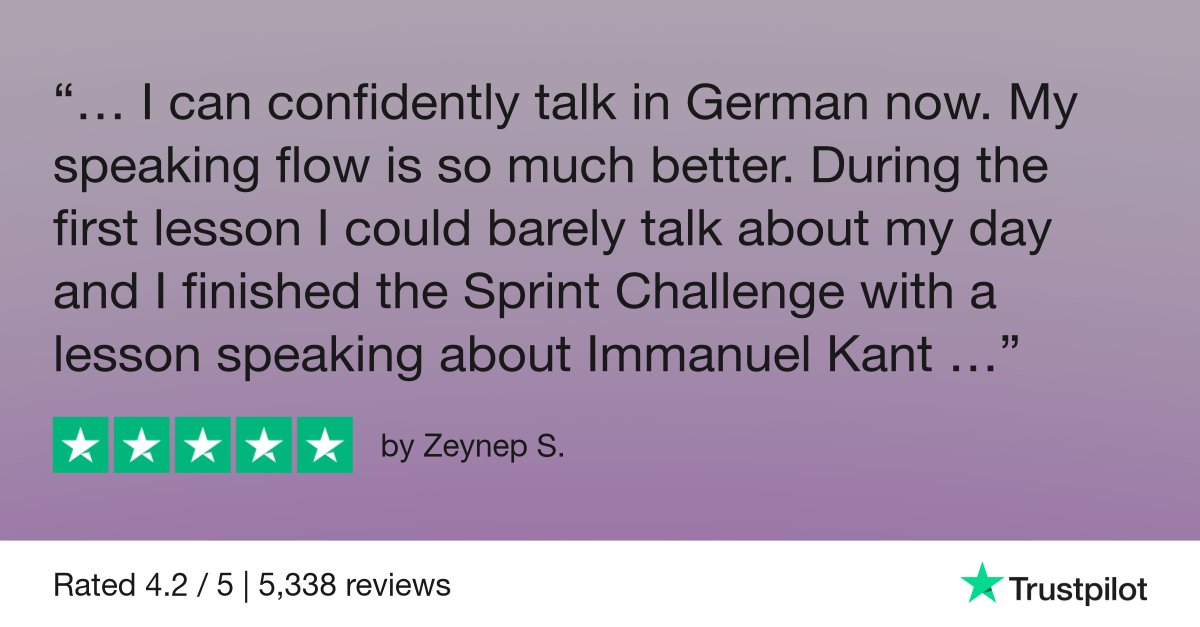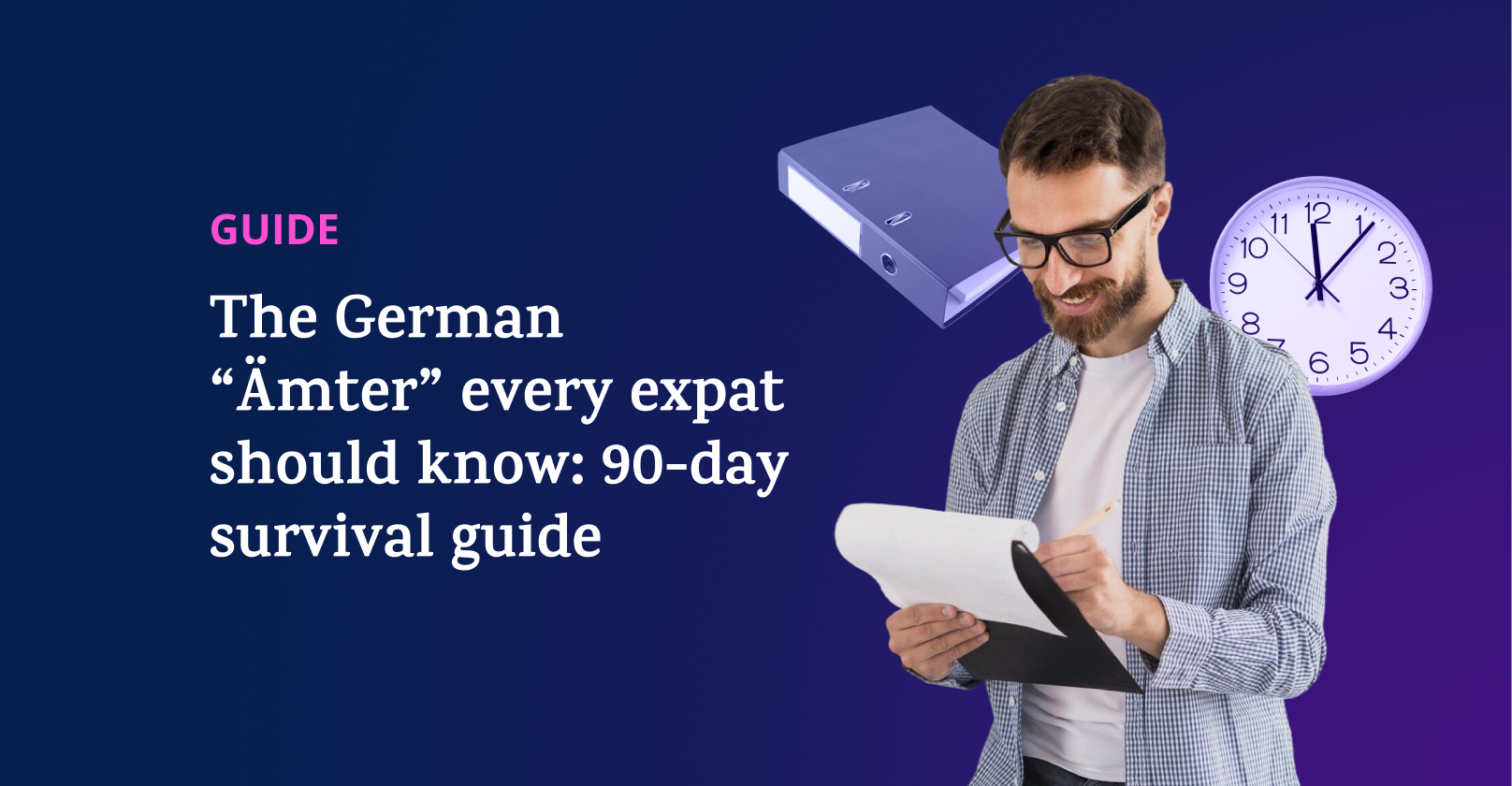The origins of the German language: From tribal roots to modern German
If you’re learning German and want to do more than memorize phrases, knowing where the language comes from can give you a serious edge. Plus, it’s truly exciting to explore the development of languages throughout different times and landscapes.

The German language can be traced back to ancient tribal roots, from which it evolved through centuries of migrations cultural shifts. By recognizing how German sprang from the same Germanic family as English, you’ll find it easier to spot cognates, make sense of its grammar patterns and appreciate the regional dialects you encounter in cafés or on the street.
Let’s see how German transformed from its tribal origins into the modern language you’re using today.
- Where did German come from?
- Proto-Germanic roots: The Germanic tribes and early dialects
- High German vs. Low German: Diverging paths
- The High German consonant shift: Why German sounds the way it does
- Major historical epochs of German
- FAQs
Where did German come from?
The German language traces its roots back to the West Germanic branch of the vast Indo-European language family — the same group that gave rise to English, Dutch and Frisian. These languages in fact share a common ancestor, and they subsequently developed within the context of tribes scattered across northern Europe. As these nomadic communities moved and mingled, their speech began to take on different phonetical and grammatical characteristics, which form the basis of the languages spoken today.
So, what ultimately set German apart from its close linguistic relatives? Part of the answer lies in a phonemic evolution known as the High German consonant shift. This gradual series of changes transformed the way consonants were pronounced, leading to the eventual split between High German (spoken in the southern uplands) and Low German (spoken in the northern flatlands).
For today’s learners, that ancient shift still matters. It explains why the English word “apple” is Apfel in German, and why the English “make” became the German machen. These commonalities aren’t merely objects of curiosity; they help learners connect vocabulary across languages and understand why certain sounds feel familiar.

Learn German with Lingoda
How it works

Proto-Germanic roots: The Germanic tribes and early dialects
Long before modern German, there was Proto-Germanic — the shared ancestor of all Germanic languages. It was spoken by tribes that roamed across northern Europe thousands of years ago: Goths, Franks, Saxons, Vandals and Alemanni, among others. These groups spoke a web of related dialects that shifted from region to region, much like accents do today.
As these tribes migrated (some heading south into what is now Germany, others north toward Scandinavia or west toward Britain), their speech evolved with them. This is how the early forms of German, English and the Scandinavian languages began to branch off.
Our earliest glimpses of these languages come from runic inscriptions. Short and often mysterious, these writings mark the first attempts to record what had mostly been a spoken tradition. They show how sound patterns, names and even bits of poetry began to take written shape.
For German learners today, these tribal and linguistic roots explain the deep connections between German and its European cousins.
High German vs. Low German: Diverging paths
As the early Germanic dialects spread across central Europe, geography began to shape their sounds. In the northern lowlands, people spoke what became known as Low German (Plattdeutsch). In the southern highlands, another set of dialects evolved into High German (Hochdeutsch). The terms “high” and “low” refer not to status, but to elevation, i.e., the southern hills and mountainsversus the flat northern plains.
The most important distinction between the two originated with the Second Germanic Consonant Shift, a phonemic shift that swept through the southern regions. This shift created a clear divide between High and Low German and thus laid the groundwork for what we now call Standard German, which grew out of the southern (i.e., “High”) varieties.
The High German consonant shift: Why German sounds the way it does
One of the most fascinating twists in the story of German is how its distinctive phonemes changed over time. Linguists call it the High German consonant shift, and it explains why German words often look familiar to English speakers yet sound distinctly different.
It all began earlier with Grimm’s Law (yes, Jacob Grimm of fairy-tale fame), which describes how the original Indo-European stop consonants shifted in the early Germanic languages: p, t and k became f, th and h — transforming, for example, the Latin pater into the English father.
Centuries later, a second consonant shift swept through the southern German dialects. This time, p became pf or f (apple → Apfel), t became z or ss (two → zwei), and k turned into ch (make → machen).
These changes didn’t just alter pronunciation; they helped carve out German’s distinct sound identity.
Major historical epochs of German
Old High German (~500–1050 CE)
The story of Old High German begins after the great tribal migrations. This is the earliest recognizable form of the German language, though it certainly looked and sounded quite different from today’s version.
The first surviving texts (like the Hildebrandslied and the Merseburg Incantations) show a language rich in inflection but without standard spelling. Writers in different regions spelled words slightly differently, and grammar was far more complex and far less systematized.
Still, many roots from that era are alive and well. Words like Haus (house), Tag (day) and Wasser (water) reach straight back to this period.
Middle High German (~1050–1350)
By the Middle High German period, the language began to smooth out. Inflections simplified and pronunciation shifted toward something closer to modern German. Literature flourished — epic poems like the Nibelungenlied and the love lyrics of the Minnesänger gave German the foundation of a shared cultural heritage.
This was more than linguistic evolution; it was identity building.
New High German (1650–present) and standardization
After centuries of regional variation, Early New High German brought growing consistency. By the 17th century, decades of printing and trade had encouraged the development of a standard written form. By the 19th century, dictionaries like the Duden helped standardize spelling and grammar.
Modern German (i.e., New High German) emerged as the unified standard across education, media and diplomacy. Reforms like the 1996 orthography update fine-tuned spelling, though it bears mentioning that German continues to evolve with Anglicisms and digital language trends (downloaden, chatten, etc.).
German isn’t static. It’s a living, adaptive language — one that connects ancient roots, literary tradition and global modernity.
What are the differences between High German and Low German?
High German (Hochdeutsch) developed in the southern uplands and its sounds changed with the consonant shift; Low German (Plattdeutsch) in the north maintained the prior phonemes.
When did German become a standard written language?
Standard written German has been present since the 16th century. Its development was supercharged by Martin Luther’s Bible translation and, later, the Duden dictionary.
Why is the German consonant shift important?
The German consonant shift shaped modern pronunciation and explains many English–German word links learners still notice today.
Want to understand the German language? Get to know its origins
Across the centuries, German has never stood still. From the tribal dialects of ancient Europe to today’s digital slang, German is the product of migration, sound shifts, regional color and centuries of standardization. Each stage — from Proto-Germanic to High German — has added new characteristics to how people speak, write and think in German today.
For learners, this history isn’t mere trivia. It’s a shortcut to deeper understanding. Knowing that machen and make share an ancestor, or that dialects reflect centuries of local pride, can help you connect with the language on a cultural level. You’ll start seeing patterns instead of random rules, and stories instead of grammar tables.
You can still find books in second-hand markets across Germany written in different variations and dialects of this diverse and rich language. German is no dead end — just look at it on the map. Positioned in the center of Europe, the German-speaking lands are collectively a place of constant transition, the roundabout of an entire continent.When you learn German with Lingoda, you get to discover the context, the rhythm and the history behind the words. Real fluency is about connection above perfection, and the more you understand where a language comes from, the more naturally it can become part of your own story.

Learn German with Lingoda
How it works

















